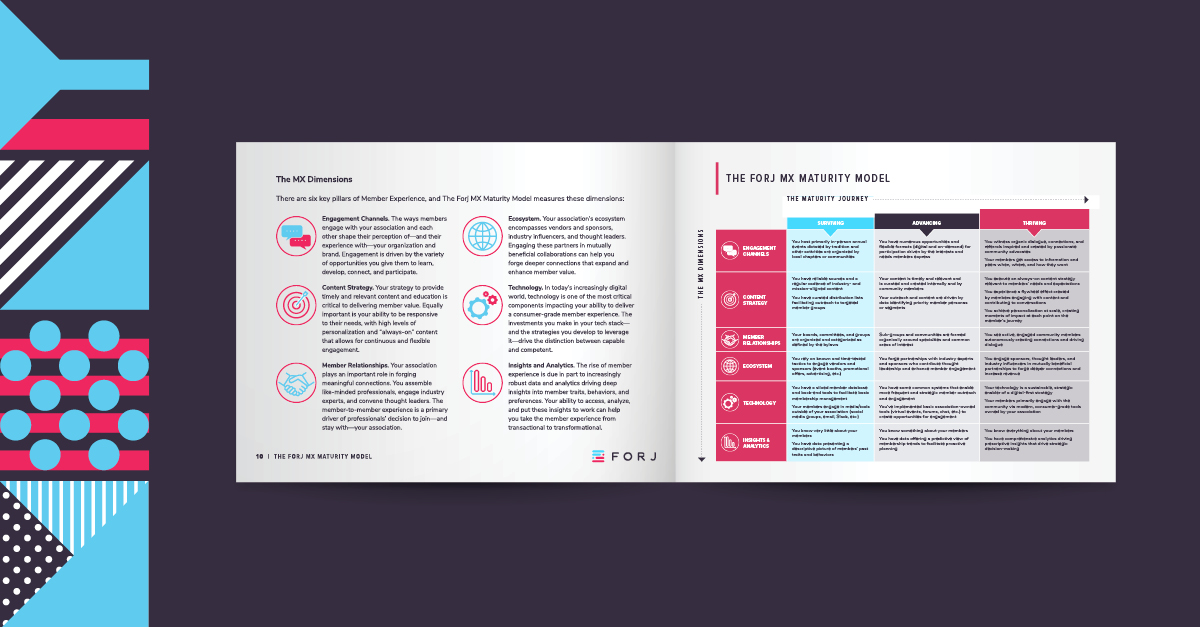
Making Member Experience a Movement

Challenge the status quo, recognize the importance of leadership buy-in, and infuse an MX mindset into your association’s DNA.
As an association leader, you likely understand how member experience (MX) impacts everything that keeps you up at night, from member acquisition, retention, and engagement to effective partnerships and revenue growth.
You know that members’ thoughts, emotions, and perceptions of their interactions with your association will ultimately define its success. But how can you create lasting change — an MX movement — that radiates from your leadership team to staff members, energizing your overall culture?
The answer lies in continually assessing where you stand on the MX continuum, pursuing innovative digital strategies, and weaving an MX mindset into your association’s DNA from the top down.
“Great advancements begin with bold leaders who can envision change and then make tough decisions to reassess past and future investments based on where member expectations are going,” said Kurt Heikkinen, Chief Executive Officer at Forj.
Perspectives on what constitutes an outstanding experience have evolved dramatically over the past decade as members recognize the benefits of digital-first service in their consumer lives.
“Members have learned what great looks like,” Heikkinen said. “They'll no longer tolerate the status quo in terms of receiving a push newsletter or attending an annual event. They expect real-time information that is relevant, personalized, and consumable in a way that acknowledges the limited time they have available in their day.”
Numerous studies tout the financial benefits of putting the customer experience first. As associations face greater competition and higher member expectations than ever before, a laser-like focus on MX becomes all the more critical.
“MX needs to become a movement for associations, not only as a matter of growth, but survival,” Heikkinen said. “They need to think about MX differently and draw upon parallels in the consumer world.”
Ignite a Cultural (and Digital) Transformation
The importance of leadership in driving the change needed for a MX mindset cannot be overstated.
“When we talk about the digital transformation of organizations, it's not about an individual investment in a functional area — it's about an investment across the organization, and MX is no different,” Heikkinen said.
Sparking change at the board level keeps MX central to the association. Heikkinen said that process should begin with an alignment of vision, or a shared understanding of a current and desired future state. He recommends providing a clear explanation of what MX is, why it is important, and what value it will create for members and the association at large.
“If that value proposition can be articulated; if the definition of success can be created, then you can start to achieve alignment,” Heikkinen said. “We see some associations do this really well — they have strategic goals that transcend a given quarter, that are thought of in terms of a long-term operating plan and embedded in a strategic plan.”
In other cases, associations operate in silos that impede a potential MX movement. From marketing, content, and business development to event coordination and learning, every part of the organization is needed to bring an exceptional MX to life.
Align your Team
After getting your board on board, you’ll need to generate excitement among your team. This is a necessary step: According to Gartner, only 31% of HR leaders believe their organizations have the culture required to drive performance. Heikkinen said we can all relate to a time when we understood a vision and truly believed it was achievable — whether that meant winning the division championship on your baseball team or accomplishing a goal along your career path.
“To create a compelling and believable vision, leaders should help individuals recognize what a positive customer experience feels like for them,” he said. “We all are loyal to certain brands that understand our interests and anticipate our needs. It's not about a one-time experience; it's about all of those moments that matter; the moments that create lifetime relationships.”
Reflecting on past experiences helps staff recognize that truly great experiences are rooted in a proactive, rather than reactive, service mindset. They’re prescriptive, personalized, and chart a path throughout a member’s lifecycle.
“It may take two or three years to complete the full journey in terms of cultural transformation,” Heikkinen said. “But if you cast that anchor forward, envision what's possible, and celebrate incremental wins along the way, you’ll get there.”

.png?width=1200&height=627&name=Forj%20LinkedIn%20(17).png)
.png?width=60&height=60&name=Kurt%20Heikkinen%2c%20Forj%20CEO%20(1).png)

